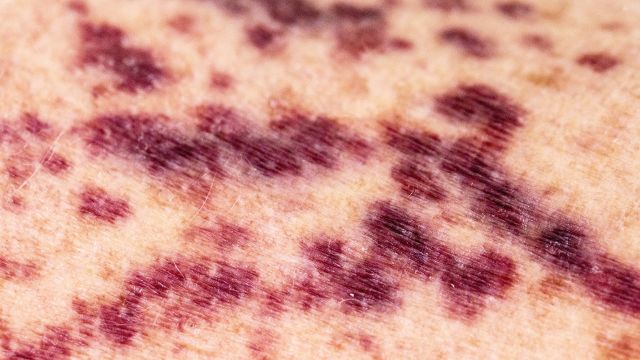Updated on August 1, 2024
Immune thrombocytopenia (ITP) is a disease where antibodies attack platelets, small pieces of blood cells that are vital to the healthy function of the blood and circulatory system.
Platelets prevent bleeding, and stop bleeding when it occurs. When you have an injury like a cut, platelets converge and coagulate on the damaged blood vessels to help stop the bleeding. Platelets also perform a variety of functions that help repair damaged blood vessels, help blood vessels remain structurally intact, and prevent bleeding in blood vessels that are damaged by infection or inflammation.
The ability to perform these functions is dependent on platelets existing in adequate numbers in the blood. When platelet counts become too low—for example, as a result of a disease like ITP—a person will bleed and bruise more easily, and a number of bleeding and bruising symptoms can occur.
ITP and bleeding
Bleeding easily and excessively is a common symptom of ITP. A cut or a scrape may bleed a lot and may bleed for a long time. This is because there are not enough platelets in the blood to clot together and stop the bleeding. Wounds may also take a longer time to heal. Bleeding symptoms can also include nosebleeds, bleeding gums (for example, during dental work), blood in urine or stool (which can indicate internal bleeding), and abnormally heavy menstrual bleeding.
ITP and bruising
Bruises are injuries when small blood vessels are broken, but the skin remains intact. Blood leaks from these broken vessels and accumulates under the skin, causing blue or purple discoloration. Bruises are also called contusions.
A hematoma is similar to bruise, but different, in that it occurs when blood seeps from a larger blood vessel. Hematomas can form lumps that can be felt under the skin and can be black, blue, and red in color.
Low platelet counts may also cause purpura, also known as blood spots, purplish spots that are the result of blood leaking from small blood vessels and pooling beneath the skin. Purpura are similar to bruises, but appear spontaneously and are not caused by injury.
Petechiae are another potential symptom, and are tiny dots that look like a rash, but are caused by leaking capillaries. Petechiae appear in clusters, and can be red, purple, or brown in color. In addition to appearing on the skin, both purpura and petechiae can occur on parts of the body that are lined in mucous membrane, such as the inside of the mouth.
Diagnosing ITP
There is no single test to determine if a person has ITP. Diagnosing the condition involves ruling out all the other possible explanations for low platelets—what is called “a diagnosis of exclusion.” It is also important to remember that ITP is only one cause of low platelet counts and there are many others. Autoimmune diseases, certain cancers, medications, exposure to toxic chemicals, viruses, genetic disorders, pregnancy, infections, an enlarged spleen, liver disease, alcohol abuse, and conditions that affect the bone marrow can all cause low platelets.
If you have bleeding or bruising symptoms like those described above, is important to work with a healthcare provider to get an accurate diagnosis. If you have ITP, it is important to work with a healthcare provider to monitor and treat the condition.






